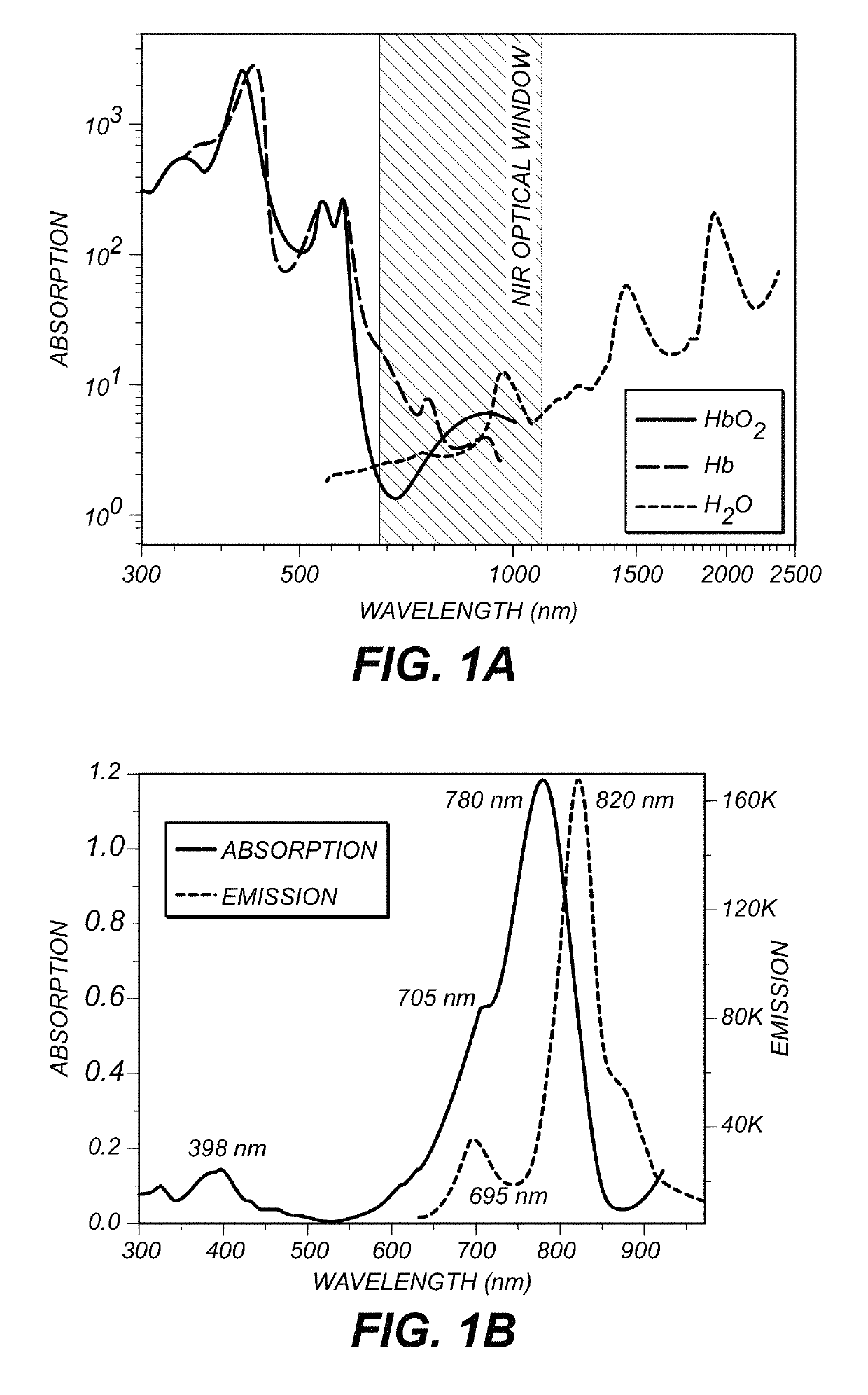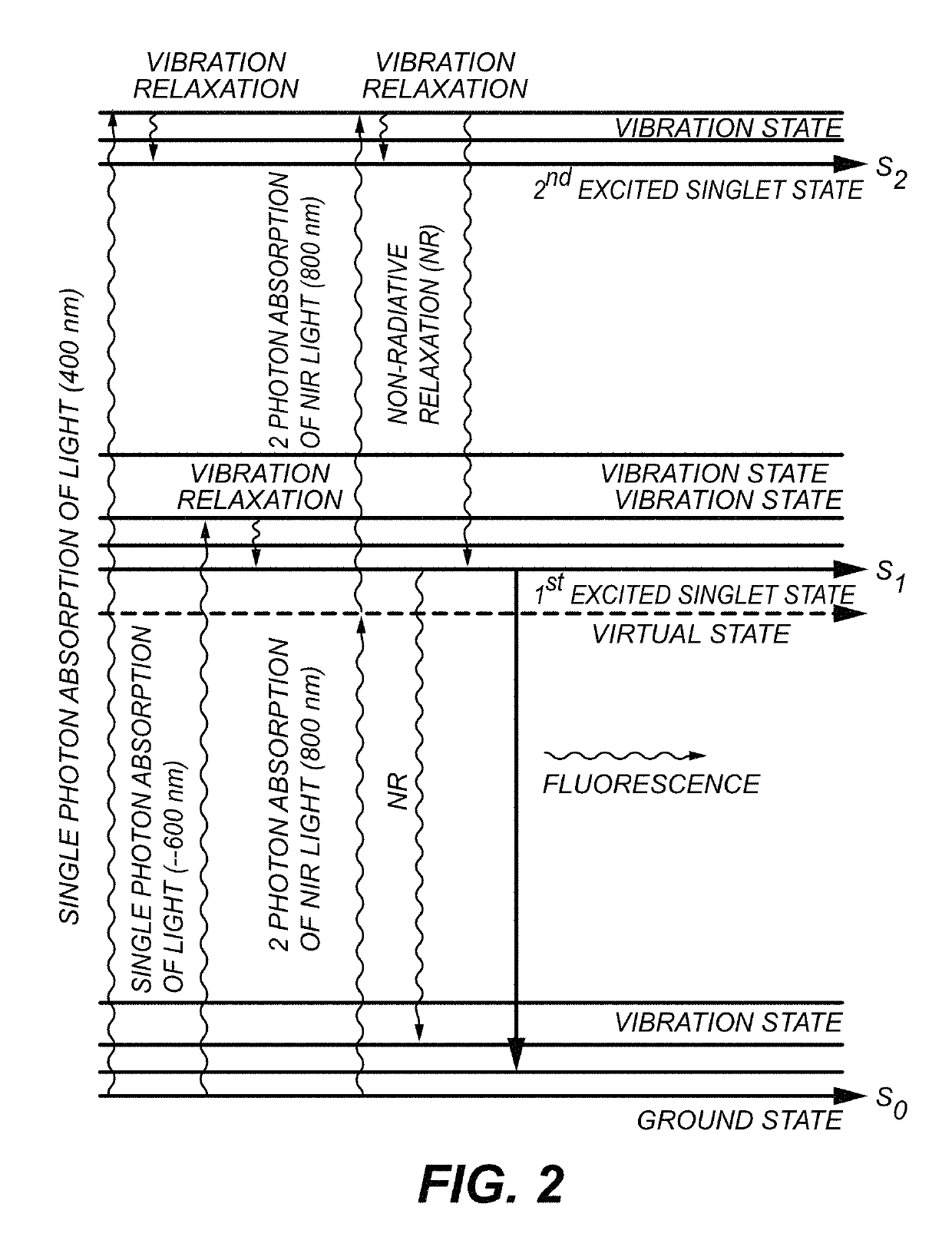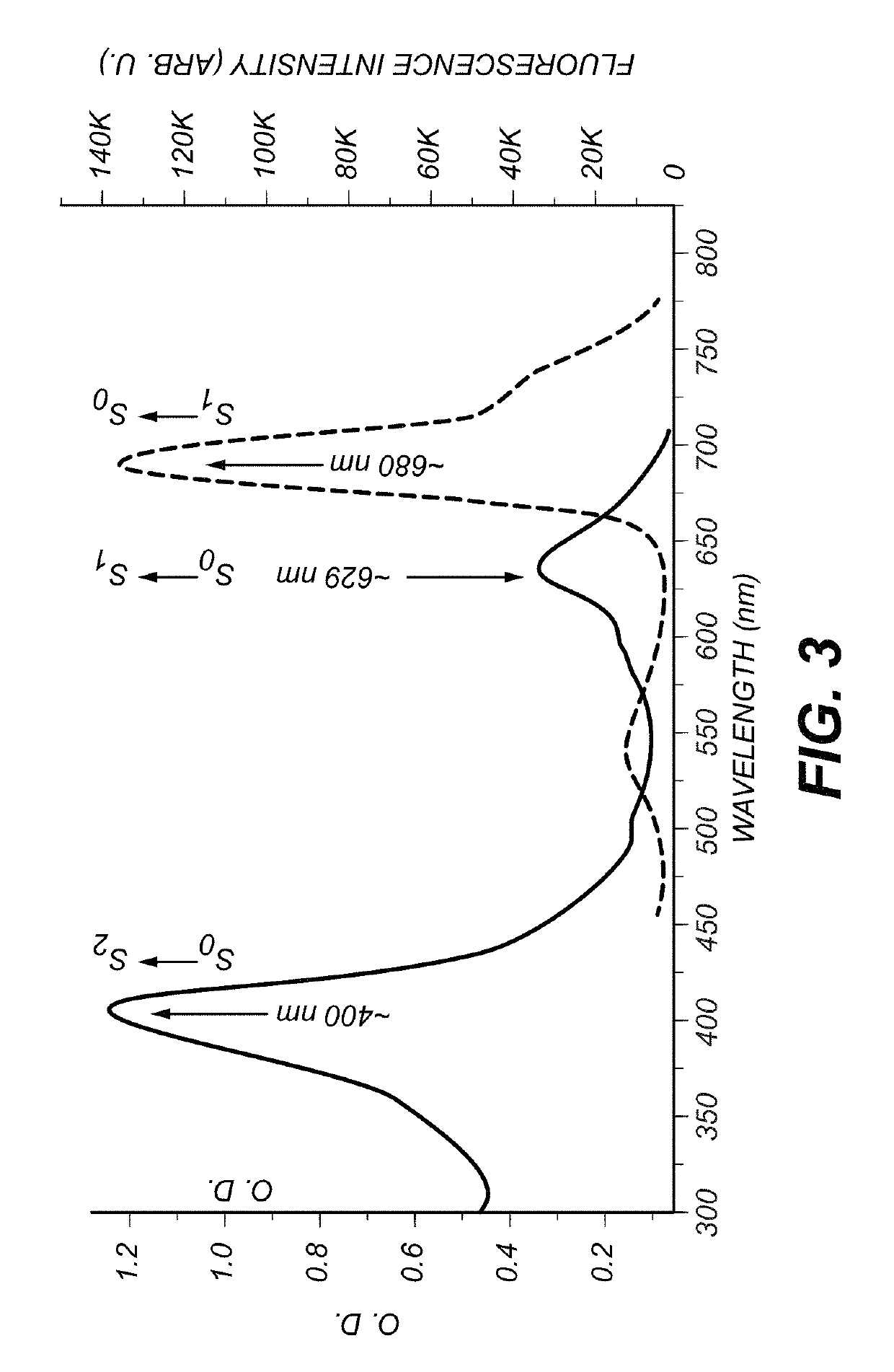Method of deep tissue imaging using multi-photon excitation of a fluorophore
a fluorophore and deep tissue imaging technology, applied in the field of biological tissues, can solve the problems of limited penetration depth of current imaging techniques, limited imaging depth, and no method has been entirely satisfactory, and achieves the effect of increasing energy
- Summary
- Abstract
- Description
- Claims
- Application Information
AI Technical Summary
Benefits of technology
Problems solved by technology
Method used
Image
Examples
examples
[0030]The specimens to be imaged were Chl α- and ICG-stained uncoated pore glass beads (37 micrometer with pore diameter of about 24 nm). The beads were respectively soaked in a Chl α and ICG solution overnight. All the sample preparations and measurements were performed at room temperature. The size of beads was selected to approximate microvessels in a human brain.
[0031]FIG. 5 is a schematic diagram of a system 500 for imaging. A picosecond or faster laser 502 (e.g. a Ti:Sa laser) provides a multi-photon wavelength to galvanometer-drive X-Y mirror 504. The multi-photon wavelength is passed through a scan lens 506, a field aperture plane 508 and through a tube lens 510. A mirror 512 directs the multi-photon wavelength to a piezoelectric translator 514 which is in communication with objective lens 516 and specimen 518. An emission wavelength is produced by specimen 518 which is subsequently directed to IR-blocking filter 520. IR-blocking filter 520 selects wavelengths between 400 an...
PUM
| Property | Measurement | Unit |
|---|---|---|
| emission wavelength | aaaaa | aaaaa |
| multi-photon excitation wavelength | aaaaa | aaaaa |
| multi-photon excitation wavelength | aaaaa | aaaaa |
Abstract
Description
Claims
Application Information
 Login to View More
Login to View More - R&D
- Intellectual Property
- Life Sciences
- Materials
- Tech Scout
- Unparalleled Data Quality
- Higher Quality Content
- 60% Fewer Hallucinations
Browse by: Latest US Patents, China's latest patents, Technical Efficacy Thesaurus, Application Domain, Technology Topic, Popular Technical Reports.
© 2025 PatSnap. All rights reserved.Legal|Privacy policy|Modern Slavery Act Transparency Statement|Sitemap|About US| Contact US: help@patsnap.com



